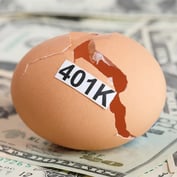There is a new and growing movement in our industry toward so-called evidence-based investing, which has much in common with evidence-based medicine. Given that it’s a relatively new concept — even though the best advisors have always practiced it — it might be helpful to look carefully at some possible alternatives to being an evidence-based advisor.
Here is a baker’s dozen worth of options for your thoughtful consideration. Many were adapted liberally from a piece on evidence-based medicine written by Dr. David Isaacs and Dr. Dominic Fitzgerald for the “British Medical Journal” in 1999. If I’ve missed any category, please let me know.
The eminence-based advisor
This (usually older) advisor wants you to believe that the more senior the practitioner, the less importance needs to be placed on anything so trivial as mere evidence. Apparent experience, it seems, is worth more than any amount of evidence.
These advisors have a touching faith in personal experience, which can be defined as “making the same mistakes with increasing confidence over an impressive number of years.” Such an advisor’s white hair and balding pate are often called the “halo” effect and act to trump substantive knowledge.
His (rarely her) well-appointed suite of offices featuring fine views and paneled wood are usually seen as the best available evidence of quality.
The fear-based advisor
This sort of advisor keeps on shouting from the rooftops that “the end is nigh,” over and over and over again, no matter what actually happens, in order to get you to respond. The idea is that if clients and prospects are sufficiently scared, they will run to the fear-monger for refuge. In other words, quite simply, fear sells.
The crooked advisor
This category of advisor is both self-explanatory and far bigger than generally assumed. For these advisors, prospects and clients are merely opportunities to be exploited by the best available means. They actually do care about evidence, but it’s a very different sort of monetary evidence (cha-ching).
The vehemence-based advisor
This sort of advisor sets out to substitute volume and passion of transmission for actual evidence so as to pummel, cajole and harass prospects, clients and adversaries into believing that he (rarely she) is really good.
The eloquence-based advisor
Proponents of this approach are always smoooooth. They feature year-round tans (even in New York), power ties, fine suits from Barneys, and (especially) a silken tongue. Sartorial elegance and verbal eloquence are deemed powerful substitutes for mere evidence.
The novelty-based advisor
This specimen emphasizes what’s new and unique, the less transparent the better. They always have the latest and the greatest.
Black boxes and hedge funds are prominent in this space — because he (again, rarely she, as is true in most other advisor categories) is so smart, don’t cha know?
The providence-based advisor
An advisor who lacks convincing evidence will often claim that the advice he is giving comes straight from God. Sometimes the claim is implicit, sometimes explicit.
Sometimes the motivator is guilt, sometimes it alleged brotherhood. But the results are usually hellish.
The intuitive advisor
Alleged common sense is often more attractive than real evidence, especially because good investing is often counter-intuitive. Therefore, this sort of advisor will go with his gut about stocks, funds, managers, styles, timing and forecasts.








 April 03, 2017 at 08:00 PM
April 03, 2017 at 08:00 PM










